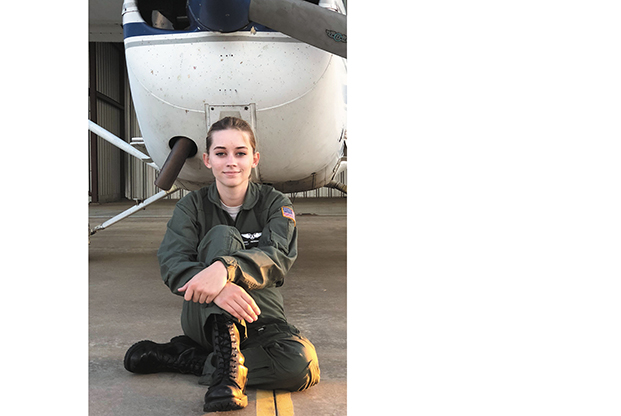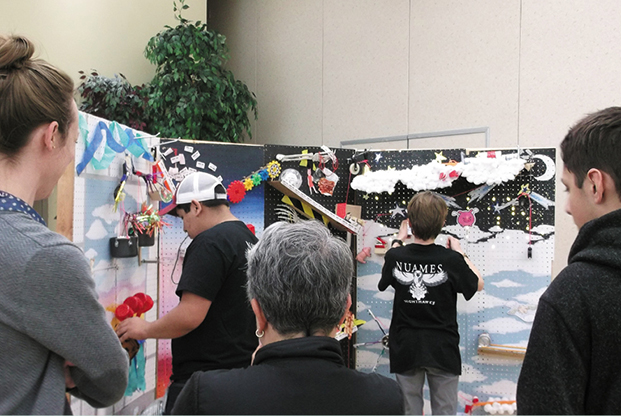
Civil Air Patrol cadet Emma Herrington became the first graduate of the new Cadet Wings Program, earning her private pilot’s certificate after passing the Federal Aviation Administration’s practical test. Photo: courtesy of Emma Herrington
CAP ANSWERS PILOT SHORTAGE CALL
Emma Herrington, a cadet chief master sergeant with the Texas Wings Sulphur Springs Composite Squadron, was one of the first cadets to benefit from CAP’s new “Cadet Wings Program.” As part of USAF’s Youth Aviation Initiative, funded at more than $1 million by the Air Force, Cadet Wings helps CAP cadets obtain their private pilot licenses. The funds cover fuel and aircraft rental through CAP’s existing flight training program and may be used at the cadet’s home squadron, at an approved flight school, or (starting in June 2019) at a one-month training program.
“I knew CAP flew missions, but I didn’t know you could train out of CAP aircraft, so when orientation flights were first mentioned, I was ecstatic, … I had no idea my first flight with CAP would lead to many more. O-flights are the most important part of a cadet’s journey through CAP, and most importantly, they are free,” Herrington told CAP.
After completing five orientation flights, Herrington attended week-long training at the Shirley Martin Powered Flight Academy (PFA) in Texas, where she soloed and completed 10 hours of close-pattern and cross-country training.
While there, the Cadet Wings Program awarded Herrington a flight scholarship, and the Air Force Association’s Northeast Texas Chapter—which contributes more than $5,000 annually to CAP—stepped in to help by awarding Herrington a $1,000 fuel- and maintenance-cost scholarship, allowing her to complete all training requirements and obtain her license. Herrington is a senior in high school and has applied to the US Air Force Academy, bringing her that much closer to a career in aviation.

NUAMES students put the final touches on their Rube Goldberg entry, which won in their division. Photo: Courtesy of Alex Dubovik.
The Utah Air Force Association and Weber State University’s Engineering, Applied Science & Technology hosted the 6th Rube Goldberg Machine Competition in January. The event was held on campus in Weber State’s Shepherd Union Ballroom with support from the Utah AFA Aerospace Education Foundation, Weber State Center for Technology Outreach, Utah STEM Action Center, Hill Air Force Base STEM Program, and Secturion Systems.
The challenge was to design the best “automated” machine to deposit coins into a piggy bank. Teams from Northern Utah Academy for Math, Engineering, and Science (NUAMES), Quest Academy, Capstone Classical Academy, New Bridge Elementary, and Odyssey Elementary participated in one of three divisions: elementary school—ages eight to 11, middle school—ages 11 to 14, and high school—ages 14 to 18.
Volunteers served as judges and referees by inspecting and evaluating each team and machine.
The referees’ job was to make sure the designs met requirements and filled the piggy banks properly for 40 percent of their score, and the judges scored the remaining 60 percent on teamwork, ingenuity, and whimsical aspects. Said one elementary school teacher: “It is good to see the young students observe the other machines and ask why they operate that way.”
NUAMES won in the high school division, and Quest Academy won for the middle school division. Both teams will represent Utah at the Rube Goldberg National Finals in Lawrenceburg, Ind., on April 6, 2019.
The New Bridge Elementary team won trophies for Rube Goldberg Spirit of Hilarious Inventions and Helping Hand Teamwork, while Odyssey Elementary won the Professor Butt’s Creative Spark Award.